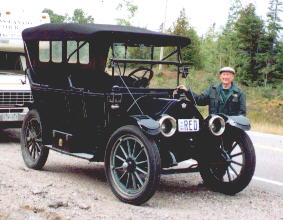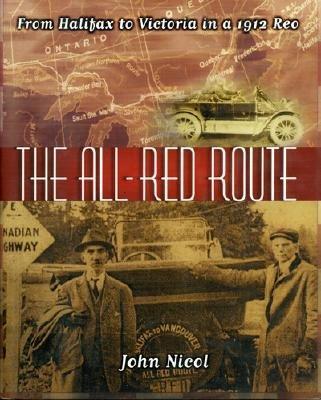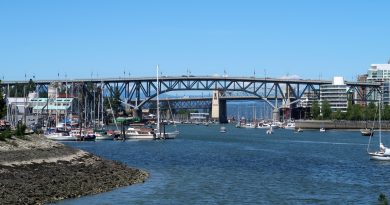A 1912 Journey Recreated

Photo: Jon Upton
In 1997 Lorne Findlay, the man standing by that beautifully restored 1912 REO Special (left), made an astonishing journey: he drove the car right across Canada! With him was writer John Nicol. What the two men had accomplished was to recreate a 1912 journey in which a freelance writer named Thomas Wilby and his driver/mechanic, Jack Haney, became the first to drive across the country. They accomplished that epic journey in a brand-new REO the Fifth, the same model Lorne Findlay drove.
In fact, the 1912 voyage was meant to publicize the REO car, a sturdy automobile designed and built by Ransom E. Olds—whose initials gave the car its name. (Later, Olds was to use his name again when he launched the “Oldsmobile.”) The Fifth was, you will not be surprised to learn, the fifth car he had designed.
Car buffs will want to know that the REO has a four-cylinder F-head engine (an engine with some of its valves in the head and some in the cylinder block, giving an F-shaped appearance) that manages 30 to 35 horsepower. It has to be hand-cranked to start, but in 1912 you could get a self-starter for $25 more. The car is 2.3 metres (7.5 feet) high. And buffs will be delighted to learn that Lorne’s car has the same motor it began with 93 years ago, probably because for 44 years of its long life it sat unused in its original owner’s barn.
On August 27, 1912 Wilby and Haney left Halifax. Thomas Wilby was a journalist who mostly wrote magazine travel features. He would write a book about this trip called A Motor Tour Through Canada.
“The choice of route was simplicity itself,” he wrote. “There was only one way across. I could motor from Halifax to Saint John, N.B., steer north for the St. Lawrence at Riviere du Loup, and follow that stately stream to Quebec, Montreal and Ottawa.” He goes on to relate the long route he will follow, the line of the Canadian Pacific Railway as his guide, on to Alberta. “After that, all that was necessary was to inquire my way to Vancouver of the first man I met!”
It wasn’t quite that simple, but they came through all right.
There was no national highway in 1912 and very few good provincial roads. The trip can only be hinted at here: it took him 290 pages to describe in his book. Some stretches could not be made by road at all. They travelled by boat across Lake Superior and, near Lytton in BC, had to be carried for a short distance by train.
Wilby wrote a quirky book, thick with philosophizing and studded with contemptuous references to the working-class people he met along the way . . . especially if they were non-British. (One of the funnier aspects of the 1912 trip, Lorne Findlay reports, is that the two men ended up hating each other! When Lorne and John Nicol finished their 1997 trip, they were still friends. Nicol wrote a book about the trip, published in 1999: The All-Red Route.)

[Image: Book Depository
When Wilby and Haney arrived in Vancouver October 14 (having taken 49 days to make the journey) Wilby told a Province reporter that “fortune had been with us all the way across . . . we had no serious accident and only had to make ordinary repairs to the car on two occasions.”
One of those “ordinary” repairs involved a wait of several days for a new drive shaft, after the first was hopelessly twisted along one particularly rough stretch. Their best day was 185 miles (298 km), their worst 14 (19 km.)
There was a sign on the car reading “Halifax to Vancouver,” but there was still one more leg to go. They hopped a boat to Vancouver Island and drove to Alberni. There, at the farthest point west it was possible to drive at the time, Wilby uncapped a bottle of Atlantic Ocean water he had carefully carried from Halifax and poured it into Alberni Inlet, where it swirled away to join the waters of the nearby Pacific.
Their trip was done.
A personal postscript: back in 1982 I happened to mention in my Province column the Wilby/Haney trip on its 70th anniversary. Lorne Findlay phoned me after seeing the item. He was a member of the Antique Car Club of BC. “It happens,” he told me, “that I have five vintage cars, and one of them is a 1912 REO. It’s the same model Wilby rode in, and it’s in perfect running order. On the last day of their trip through the Lower Mainland, they drove from Chilliwack to Vancouver. How’d you like to come for a drive with me to re-enact that Chilliwack-to-Vancouver run?”
It didn’t take long for me to decide!
I learned more about the car as Lorne and I tootled quietly along the Fraser Highway, the speedometer rolling back and forth between 25 and 30 mph (40 to 48 km/h). The REO was a surprisingly quiet machine, but under the accelerator pedal is a little button that cuts out the exhaust muffler, giving the car more power to climb hills. When the muffler cuts out, then you hear this car. It must have been noisy coming through the Rockies, which, by the way, Wilby and Haney were, in fact, among a few to cross by auto although they laid claim to being the first.
The first crossing of the Rockies was two years earlier, in September 1910, over Phillipps Pass in the Crowsnest Pass area (see news report excerpt here »). The second crossing, according to reports, was by R. H. Bohart, who drove his 30hp Tudhope Everrit across on July 1, 1911 – and it is possible that there were others prior to Wilby’s late-1912 crossing too. It is interesting that Green, Bohart and Wilby all claimed to have been the first to cross by car; they all would have driven over Phillipps Pass, as it was the only auto route across the Canadian Rockies until the opening of the Banff-Windermere Highway in 1923 (the present Highway 93). See Wilby’s book A Motor Tour Through Canada for more.

![1912 REO [Image: Vancouver Sun]](https://vancouverhistory.ca/wp-content/uploads/2021/01/REO.jpg)

![Terminus of the Canadian Pacific Railway, Vancouver, B.C. [CVA 1376-375.52]](https://vancouverhistory.ca/wp-content/uploads/2021/01/0bdee023-eafa-43d6-8488-3ab9f10d9e26-A71380-390x205.jpg)
![The Royal Party [King George VI and Queen Elizabeth]](https://vancouverhistory.ca/wp-content/uploads/2021/01/f28034b5-2600-4dec-916a-6a68073057ad-CVA289-005.463-390x205.jpg)